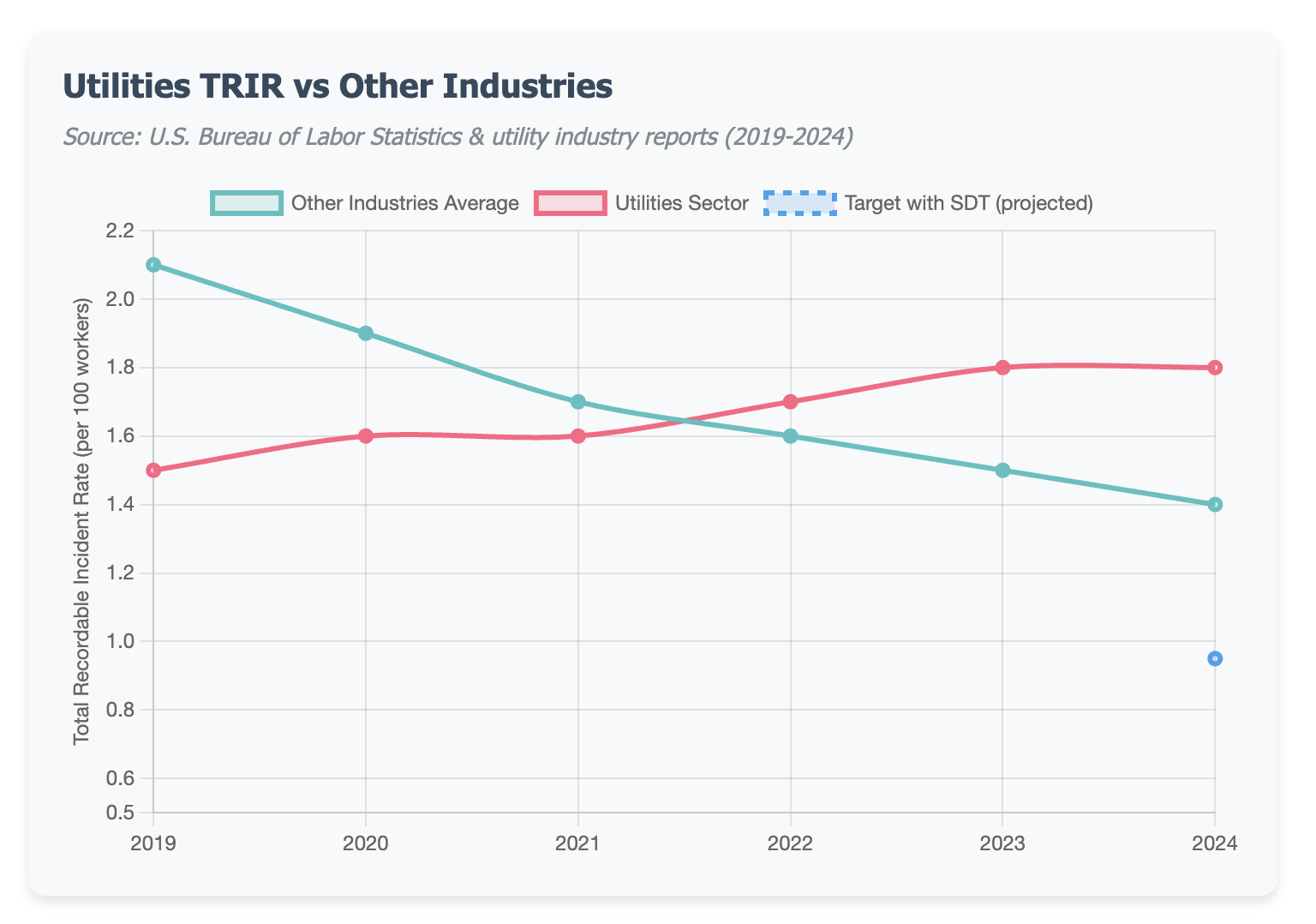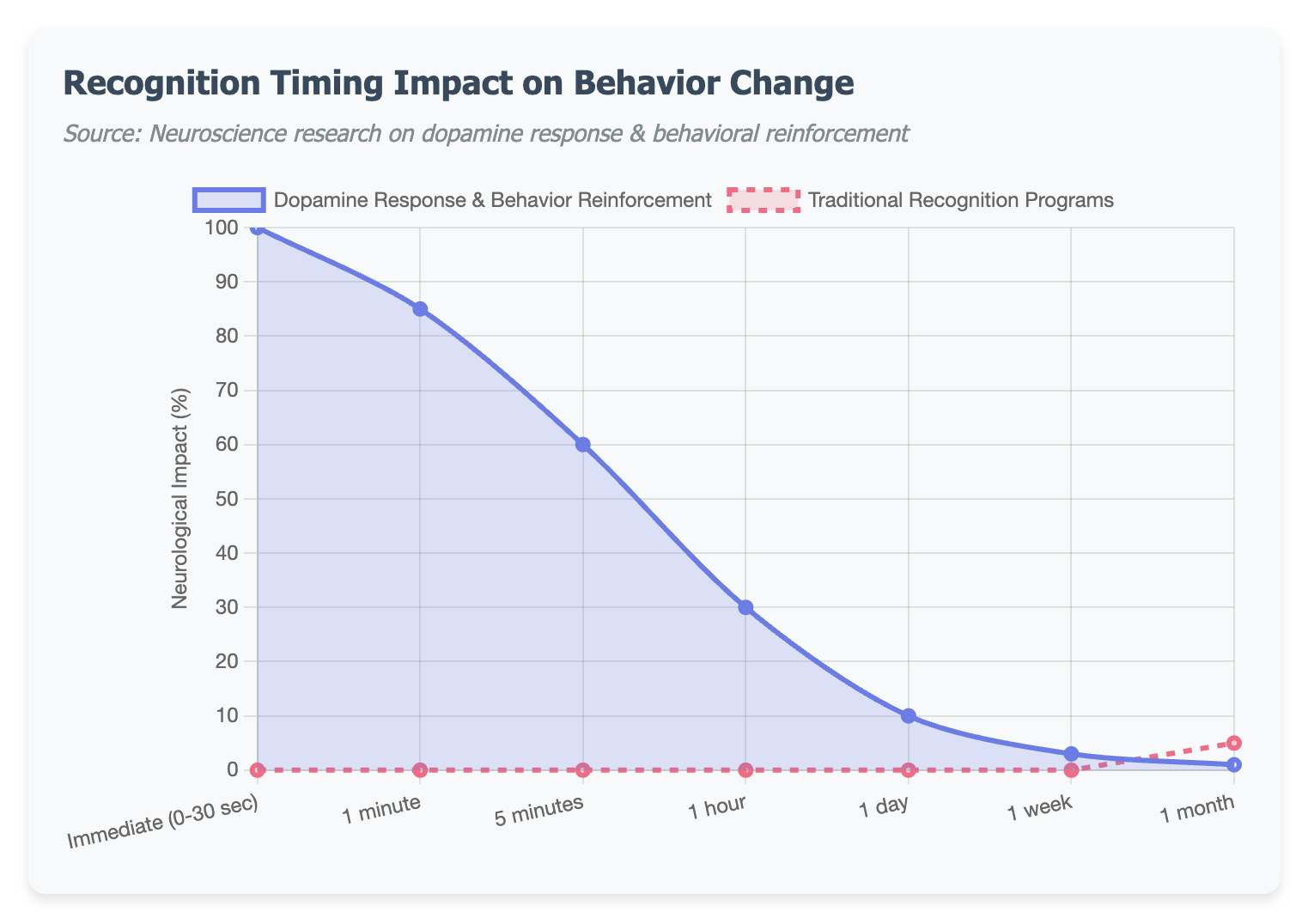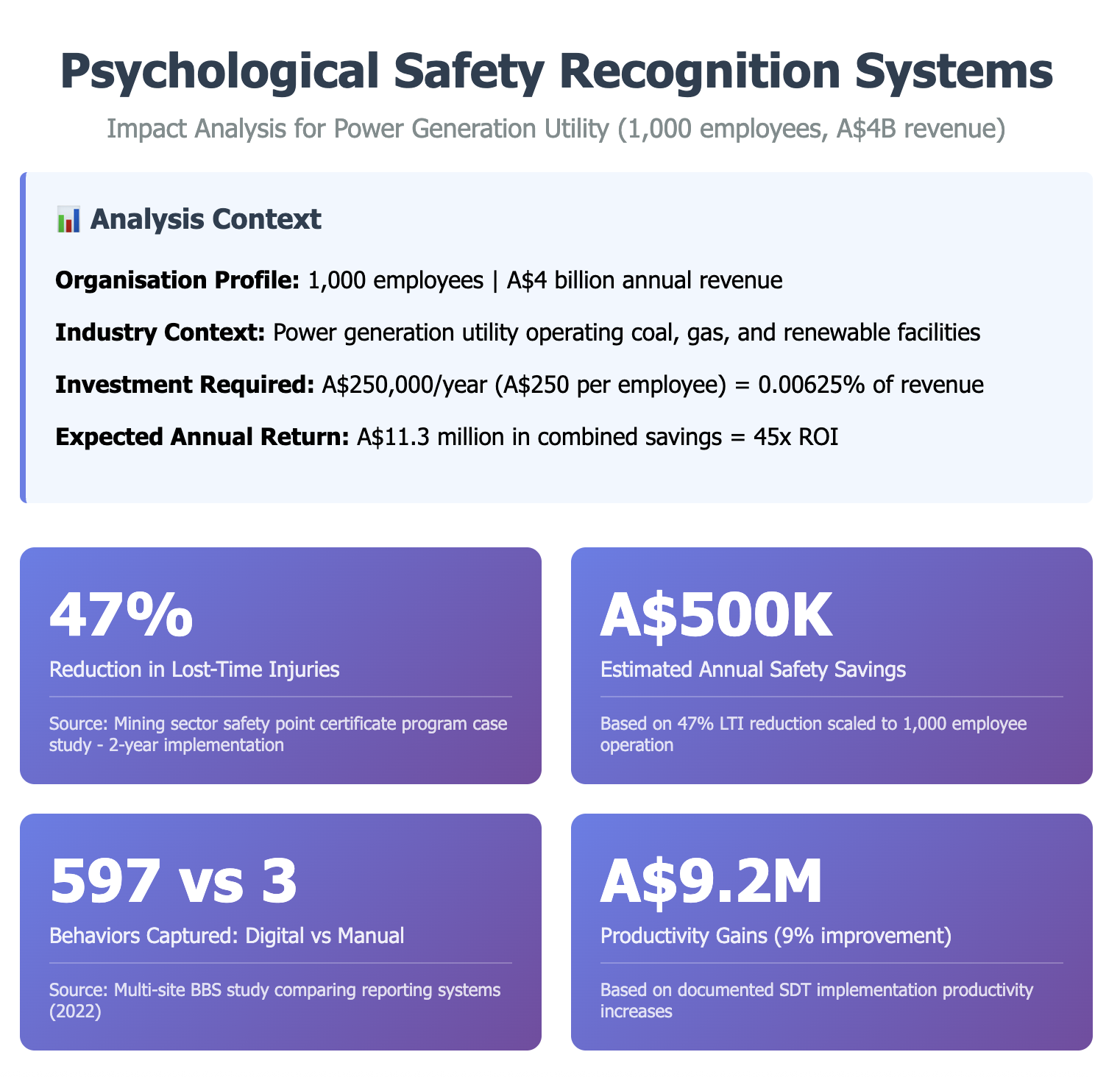The Hidden Crisis in Power Generation Safety
The power generation sector faces a paradox that should alarm every utility executive: while workplace safety has improved across most industries, utilities' Total Recordable Incident Rate (TRIR) has risen to 1.8, bucking national trends at precisely the moment when the sector needs its strongest safety performance ever.
With over 50% of the current utility workforce having less than 10 years of experience and nearly half expected to retire within the next decade, the industry confronts an experience gap that traditional safety approaches simply cannot bridge. The statistics paint a sobering picture: electricity causes 12% of young worker deaths, and new workers are statistically four times more likely to suffer electrical injuries than their experienced counterparts.
But here's what makes this crisis particularly urgent: the conventional "blame the worker" safety programmes that dominated the industry for decades are proving counterproductive with today's workforce. Research from Fortune 500 companies and global utilities reveals that when organisations shift from compliance-driven to ownership-driven safety cultures using psychological science, they achieve remarkable transformations, including incident reductions of up to 47%.

The Failure of Traditional Safety Approaches
For decades, Behaviour-Based Safety (BBS) programmes have been the industry standard. These systems rely heavily on observation, external rewards for compliance, and consequences for non-compliance. While initial implementations often show promise – with studies showing 25% improvement in the first year – the approach contains fundamental flaws that become more pronounced over time.
The critical limitation? BBS creates what psychologists call "controlled motivation": workers behave safely primarily when being watched or to gain rewards. Research demonstrates this external focus can actually undermine intrinsic safety motivation through "motivational crowding out", where workers begin viewing safety as something they do only for external benefits rather than personal values.
More concerning, traditional BBS programmes often foster blame cultures where individual workers bear responsibility for systemic failures. This leads to underreporting of incidents as teams protect their "days without incident" streaks, creating dangerous blind spots in safety management. One multi-site study found that manual reporting systems captured only 3 behaviours on average, while modern recognition systems identified 597 safety-relevant behaviours – a nearly 200-fold difference in visibility.

The Science of Psychological Safety: Self-Determination Theory
Enter Self-Determination Theory (SDT), a more evolved approach that addresses the root causes of safety behaviour rather than just the symptoms. SDT posits that optimal human functioning arises from satisfying three basic psychological needs:
Autonomy: Workers need to feel volitional choice in their safety practices, not just compliance with mandates. This means having input into how safety is achieved and ownership over safety decisions.
Competence: Employees must believe they have the skills and knowledge to work safely and overcome challenges. This goes beyond training to include continuous skill development and mastery progression.
Relatedness: Workers need to feel genuinely connected to colleagues and believe management cares about their wellbeing. This creates the social foundation for peer-to-peer safety leadership.
The distinction between autonomous and controlled motivation proves crucial. Workers with autonomous motivation –those who value safety intrinsically – demonstrate superior outcomes including sustained safety performance, greater wellbeing, lower turnover, and higher engagement. They don't need constant observation because safety has become part of their personal values system.
Real-World Evidence: The 47% Reduction
The data from organisations implementing SDT-based recognition systems proves transformational. A mining operation, facing similar high-risk conditions to power generation, implemented a safety point certificate programme for on-the-spot recognition. The results over two years:
- 47% reduction in lost-time accidents
- $5 million savings from accident reduction alone
- Dramatic increase in proactive hazard reporting
- Shift from reactive to preventive safety culture
These aren't isolated results. AGL Energy, one of Australia's leading electricity providers with 4,000+ employees and 25+ energy assets, partnered with recognition platform providers to implement company-wide SDT-informed programmes. The initiative successfully boosted engagement, strengthened connections across their dispersed workforce, and created unified safety culture during their energy transition.
A Fortune 500 company study provides perhaps the most compelling evidence. When 25 managers received SDT-based training on autonomy-supportive leadership, their 169 employees showed significantly greater autonomous motivation and workplace engagement within just five weeks. The effects sustained beyond the intervention period, demonstrating that these aren't temporary improvements but fundamental cultural shifts.
Why Recognition Timing Matters: The 30-Second Rule
Neuroscience research reveals why instant recognition proves so powerful. The brain's reward system, particularly dopamine release, operates on precise timing. Recognition delivered within 30 seconds of a positive behaviour creates neural pathways that reinforce that behaviour. Delayed recognition – even by hours – loses this neurological impact.
Traditional safety programmes with monthly or quarterly recognition ceremonies miss this critical window entirely. Modern digital platforms enable supervisors to deliver recognition immediately via mobile devices, triggering the dopamine response that creates lasting behavioural change. This explains why organisations using instant recognition see such dramatic improvements compared to traditional delayed reward systems.

Addressing the Psychosocial Factor
The modern workplace has evolved beyond physical hazards. Research indicates 49% of workplace illness now stems from psychosocial factors—stress, burnout, lack of recognition, and poor workplace relationships. For utilities managing the stress of energy transition, aging infrastructure, and workforce uncertainty, these psychosocial elements become critical safety factors.
SDT-based recognition directly addresses these challenges by:
- Building resilience through competence development
- Reducing stress via autonomy support
- Creating support networks through relatedness
- Fostering meaning by connecting work to larger purpose
When Stanwell Corporation implemented their award-winning "YOLO" (You Only Live Once) initiative targeting young workers, they achieved 75% reduction in young worker injuries with zero injuries in the programme's first year. The key? Moving beyond compliance to create genuine engagement with safety as a personal value.
The Systems Approach: Beyond Individual Blame
Critics of traditional BBS rightfully point out its tendency to blame workers for systemic failures. SDT-based approaches fundamentally reframe safety as a systems issue. Rather than asking "who made the mistake?", these programmes ask "what conditions enabled this incident?"
This shift proves particularly important in power generation, where incidents often result from complex interactions between aging infrastructure, operational pressures, and human factors. During the Callide Power Station explosion in Queensland, operators faced 150,000 alarms in the first 30 minutes—no amount of individual compliance training could prepare workers for such systemic chaos.
Recognition programmes built on SDT principles encourage workers to report near-misses, identify systemic risks, and propose solutions without fear of blame. One study found organisations implementing such approaches saw near-miss reporting increase by over 300%, providing crucial early warning signals that prevent major incidents.

Building Competence, Not Assigning Blame
The shift from compliance to competence represents a fundamental evolution in safety thinking. Traditional programmes focus on rule adherence—workers follow procedures to avoid punishment. SDT-based approaches build genuine capability—workers understand why procedures exist and can adapt them to novel situations.
This proves crucial in power generation's rapidly evolving environment. With 93% of new generation capacity coming from renewables through 2025, workers must navigate unprecedented technical transitions. Recognition systems that celebrate learning, problem-solving, and skill development create workforces capable of managing this complexity safely.
Research from Norwegian leadership training studies found that managers trained in supporting all three psychological needs (autonomy, competence, relatedness) saw their teams develop greater trust, job satisfaction, and safety ownership. These aren't soft benefits—they translate directly to operational excellence and incident reduction.
Implementation Framework for Utilities
Based on successful implementations across mining, manufacturing, and utilities, the evidence points to a clear implementation framework:
Phase 1: Design (2-3 months)
- Align recognition with SDT principles
- Create peer-to-peer recognition capabilities
- Develop meaningful rationales connecting safety to purpose
- Structure non-controlling reward options
Phase 2: Implementation (3-6 months)
- Train managers in autonomy-supportive practices
- Deploy mobile technology for instant recognition
- Launch pilot programmes at select sites
- Gather rapid feedback and iterate
Phase 3: Measurement (Ongoing)
- Track autonomous versus controlled motivation
- Monitor need satisfaction quarterly
- Measure safety outcomes (TRIR, LTIFR, near-misses)
- Calculate ROI from incident reduction and retention
Organisations typically see measurable results within 6-12 months, with full ROI realisation in 12-24 months. For a 10,000-employee utility, investment of $250 per employee annually generates returns exceeding 44x through turnover savings, productivity gains, and incident reduction.
The Strategic Imperative
The convergence of workforce crisis, rising incident rates, and energy transition complexity demands fundamental change in how utilities approach safety. With 91% of power workers reporting they would move for the right opportunity and 44% willing to leave the sector entirely, creating engaging safety cultures becomes a competitive necessity.
The evidence is unambiguous: utilities implementing SDT-based recognition achieve 21% engagement increases, 47% incident reductions, and measurable improvements across every executive priority. Those clinging to traditional compliance approaches face escalating costs, rising incidents, and workforce exodus.
As the sector invests $1.4 trillion through 2030 in infrastructure transformation, the human element becomes paramount. Recognition programmes grounded in psychological science provide the evidence-based intervention that transforms safety from a compliance burden to a competitive advantage.
The question facing utility leaders isn't whether to implement these approaches, but how quickly they can deploy them to capture advantage during the industry's most significant transformation in generations. With young workers bearing disproportionate risk and experienced workers retiring en masse, the window for action narrows daily.
Leading utilities have already demonstrated the path forward. The science is clear. The business case is compelling. The only variable remaining is leadership courage to abandon outdated blame-based approaches for the psychological science that creates genuine safety ownership.
For an industry where a single incident can cost millions and destroy lives, the shift from compliance to psychological safety isn't just an operational improvement—it's an ethical imperative that defines the future of safe power generation.
If you'd like to discuss how Scratchie can turbocharge your workforce, email CEO James Kell for a chat: james@scratchie.com










.svg)
